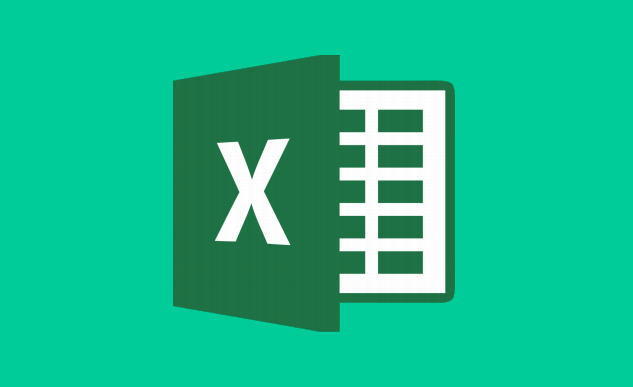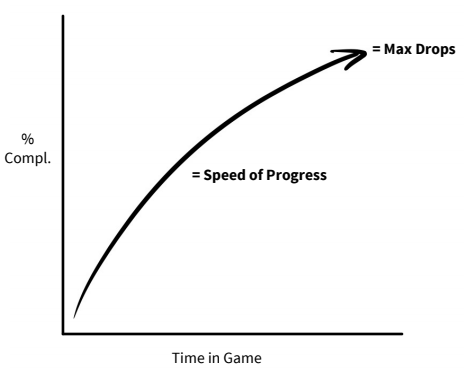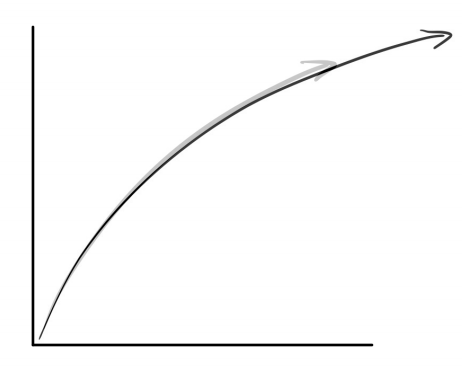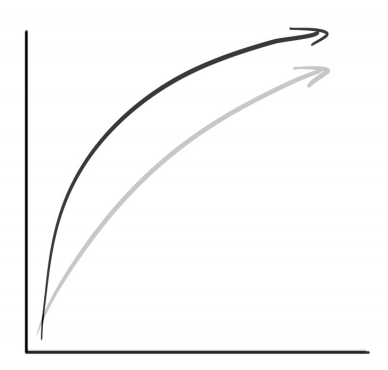What to pay attention to for a game developer who decided to implement gacha,” says Adam Telfer, co–founder of Chatterbox Games.
Based on his own speech at Pocket Gamer Connects in Helsinki, Adam wrote a brief summary of the report. We present an adapted translation of the material.

Adam TelferIt’s simple: gacha is a lottery
Gacha (gatcha) is a lottery in games. The prize in the gacha is necessarily collectible items, usually cards or characters used in the basic mechanics.
A few years ago, gacha met only in Japanese battlers. Now the situation has changed. Gacha is widespread. It will not be difficult to find it in games of completely different genres and developers.
For example, it is in Madden from Electronic Arts, in Clash Royale, in a golf simulator and even a game about Top Drivers cars.

It is possible that very soon it will be possible to see it in casual projects. For example, in some three-in-a-row.
The key aspects of gacha are: Depth, Breadth and Desire.
The depth of the gacha determines the long-term retention and maximum costs of the game
The depth of the gacha answers the question: how long does the game not end with gacha?
Ideally, the gacha should last as long as possible. The longer the better.
Gacha usually lasts until the player runs out of content or reasons to pull content from gacha. The latter can happen when the player stops feeling that the new content gives tangible progress.
The importance of the depth of the gacha depends on what place it occupies in the game. The more a game relies on gacha as a retention and monetization tool, the more important its Depth, respectively.
The two most important indicators of the success of the freeplay game depend on the depth of the gacha: long-term retention (long term retention) and the maximum possible costs of the game on the part of the player (max economy spend). The greater the Depth, the bigger they are.
The depth of the gacha is influenced by the content, its rarity and working with duplicates
It is quite possible to get an idea of the Depth of gacha in the game by resorting to Excel. To do this, you need to simulate the maximum number of drops to complete the gacha.

A drop is a collectible item that a user receives from a gaming lottery. For example, in Clash Royale, these are cards from chests.
The model should answer questions such as “How much content is in the game?”, “How are duplicates used?”, and also take into account the number of rare drops, the frequency of their drop-out (drop rates) and changes in the pool of drop-down content (here we are talking about updates with new content).
With the help of the resulting model, you can create a graph demonstrating how the gacha will be perceived.

Adding content usually adds Depth (along with the growth of output options, the probability of obtaining the necessary element decreases, more time is spent searching for it).

The more content, the more Depth
How much new content adds Depth directly depends on the rarity (that is, on the time it takes to get a specific element in the output).

The more Common content that comes across in the output (Common), the faster the progress
A rare game with gacha works without duplicates.
By the latter, we mean elements that are repeated in the drop.
Duplicates seriously affect the Depth. How exactly depends on how they affect the game progress.
If duplicates can be sold or converted into other resources spent on buying new cards or boosters, this accelerates progress. The price of such an approach is a decrease in depth.
An alternative scenario is to use duplicates for progress. This usually means that to improve an element, hundreds of duplicates are sometimes required (depending on the element), which increases the Depth and makes each drop perceived as a reward.
The role of the Gacha Scope is to stimulate the pumping of all content
The scope of the gacha answers the user’s question: why pump all the content?
The scope of the gacha is aimed at ensuring that the player does not get upset because of bad drops. To do this, it is necessary that all the content is relevant and as useful as possible.
There are four points that should be taken into account when working with a Swing.
1. Unloading sizeWe are talking about what and in what quantity the player will be able to take with him into battle.
In Call of Duty, this includes guns, ammunition, various accessories to weapons. In Hearthstone, unloading is 30 cards of the deck chosen by the player, and in Contest of Champions, unloading is 3 heroes that the player takes with him to the campaign.
The size of the offload should be such that collecting [different entities] makes sense, but not such that the player can create the perfect team.
2. Clear pros and consGame entities should have obvious advantages and disadvantages.
Thanks to this, the message will be clearly conveyed to the player: there is no ideal team, you should constantly change its composition in order to have an advantage on the battlefield.
A good example is the system of elements in battlers. She regularly forces the player to select a separate team for each quest.
3. The lack of clarity of choiceDisputes within the gaming community about which deck is better lead to players actively collecting collections.
The more content they have, the more they can experiment.
4. Game modsAdding game mods to the game, which reward players for a large number of available, for example, heroes, encourages players to collect and pump them.
For example, there are such mods in Heroes Charge and Galaxy of Heroes.
The more heroes users have in these games, the further they can go within the appropriate modes and the greater the reward they will receive.
Desirability determines the demand for gacha in the game itself
The desirability of gacha is that the game progress is determined by gacha. It is necessary to make sure that players need to resort to gacha to advance through the game.
How to check the Desirability of gacha in the game?
To do this, you need to look at the game and answer a number of questions:
- how important is gacha content for promotion?
- how important is the skill?
- can a player with a high skill quickly run through the game?
- will it seem to a player with a bad skill that gacha does not help?
- are there any mechanics in the game that reduce the value of gachi (for example, gachi progress systems that are more important than gachi content)?
***
Now you can look at your game through the prism of the described aspects to find out if your gacha is as effective as possible.
Source: mobilefreetoplay
